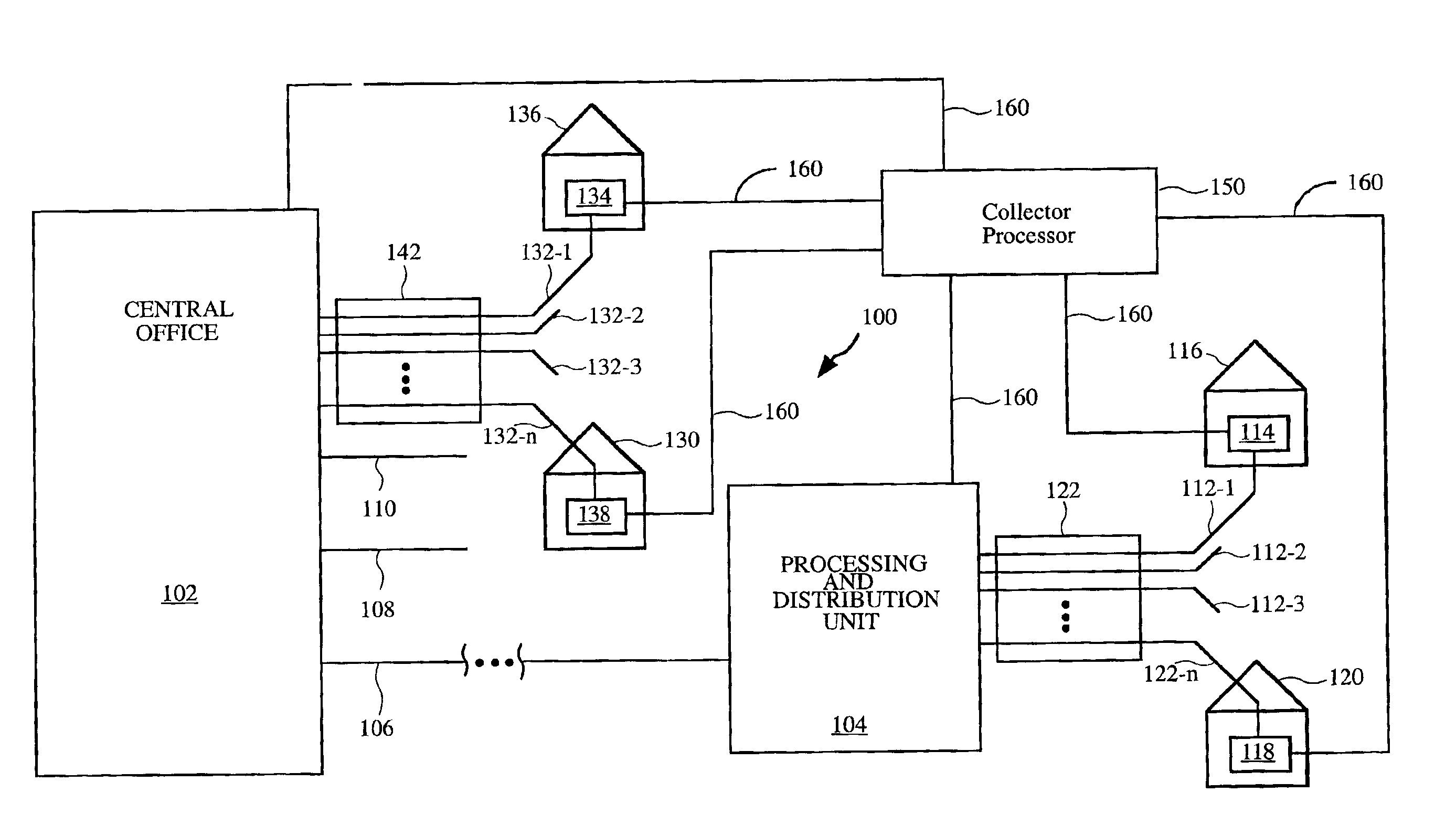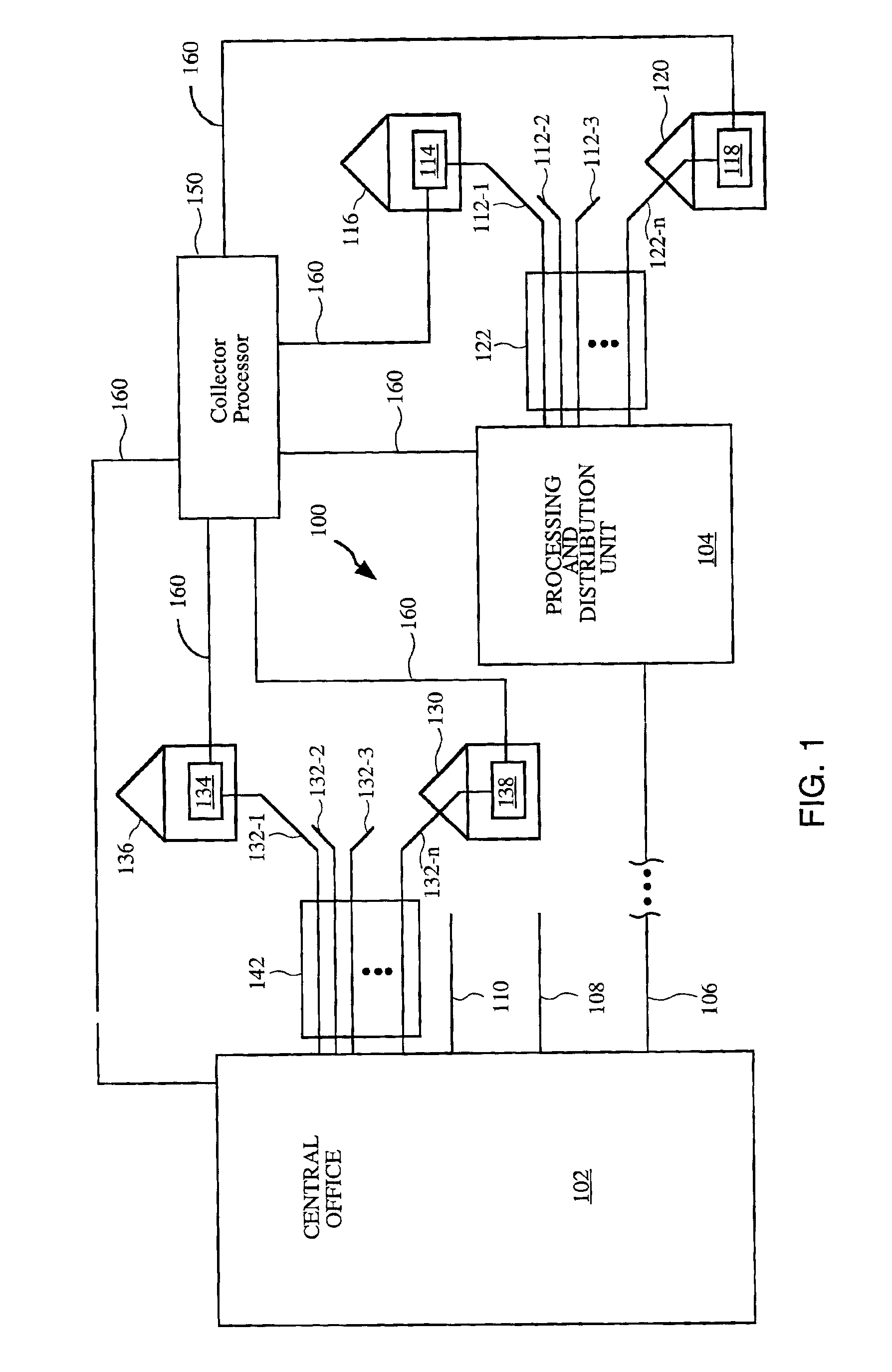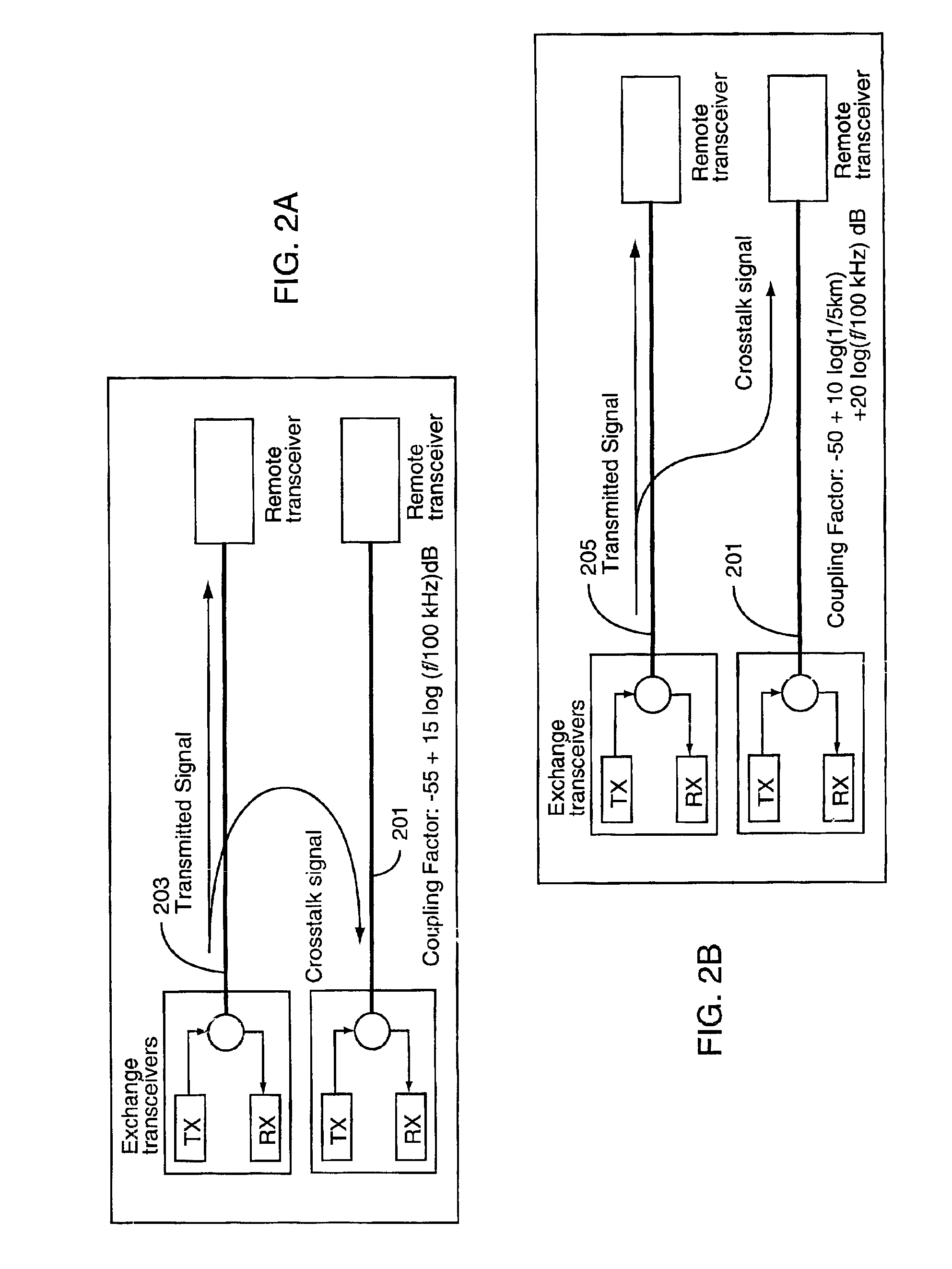Crosstalk identification in xDSL systems
a technology of crosstalk interference and communication system, applied in the field of data transmission system identification, can solve the problems of crosstalk interference, crosstalk interference, crosstalk interference,
- Summary
- Abstract
- Description
- Claims
- Application Information
AI Technical Summary
Problems solved by technology
Method used
Image
Examples
example 1
[0057]Suppose there are 10 crosstalkers (K=10) that have the same orders of magnitude, that is, ∥hj∥≈∥hi∥≈max(∥hi∥) for all j. Then, reducing Eq. 8 accordingly (with a=10, as noted above), N≈a2K=1000 provides a good estimation (that is, 1000 samples should yield an accurate estimate of the timing difference).
example 2
[0058]Suppose that crosstalker 2 is dominant, and is 20 dB above the other crosstalkers, that is, ∥h2∥≈10∥hi∥,i≠2. Then for crosstalker 2, N≈a2=100. However, to estimate the timing offset of other crosstalkers, N≈100a2=10,000. If there are not enough data available, the dominant crosstalkers need to be canceled first and the timing offset estimation for the others is performed afterwards. In some cases, the smaller crosstalkers can be ignored; they will not substantially affect the received signal. Once the large crosstalker in this example is removed, the other crosstalk signals can be addressed.
Crosstalk Function Estimations
[0059]After estimating the coarse timing differences di between the input(s) from any considered crosstalk signal(s) and the received signal, the crosstalk functions and more accurate timing differences can be obtained jointly by a least-squares estimator. In some cases, if some crosstalkers are too small, then the timing differences found through cross-correla...
PUM
 Login to View More
Login to View More Abstract
Description
Claims
Application Information
 Login to View More
Login to View More - R&D
- Intellectual Property
- Life Sciences
- Materials
- Tech Scout
- Unparalleled Data Quality
- Higher Quality Content
- 60% Fewer Hallucinations
Browse by: Latest US Patents, China's latest patents, Technical Efficacy Thesaurus, Application Domain, Technology Topic, Popular Technical Reports.
© 2025 PatSnap. All rights reserved.Legal|Privacy policy|Modern Slavery Act Transparency Statement|Sitemap|About US| Contact US: help@patsnap.com



